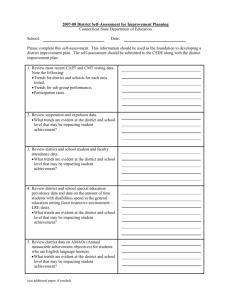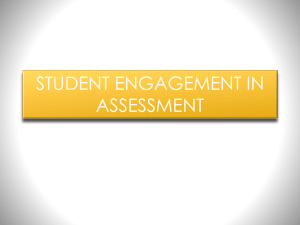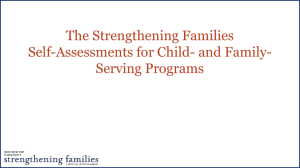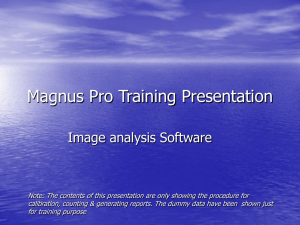Session 1 Handout - Self-Assessment and Calibration
advertisement
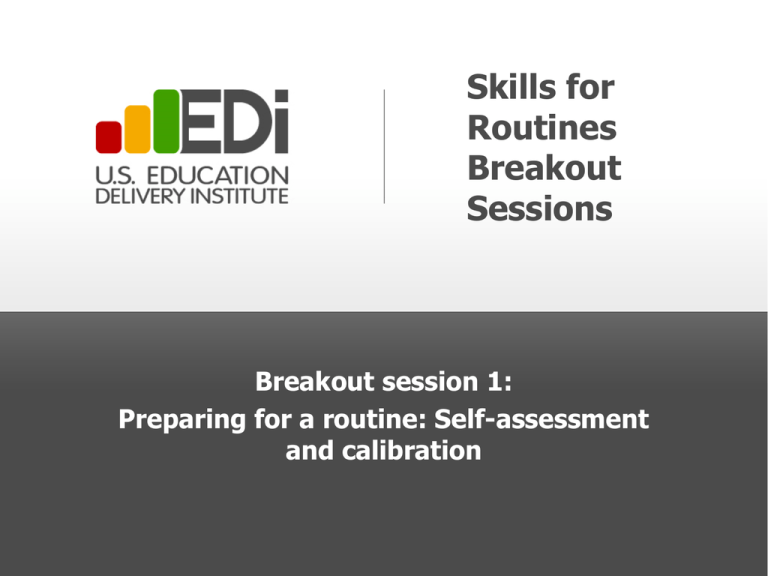
Skills for Routines Breakout Sessions Breakout session 1: Preparing for a routine: Self-assessment and calibration Our objectives for this session ▪ Understand tools and reasons for conducting a self-assessment and calibration ▪ Practice conducting a self-assessment and calibration ©2014 U.S. Education Delivery Institute 1 As you know, any good routine should include a focus on performance and an opportunity to come to a shared view of performance Regularity ■ ■ ■ ■ Strong execution ■ ■ ■ ■ Focus on performance ■ ■ ■ ■ Action on performance ■ ■ ■ ©2014 U.S. Education Delivery Institute Happens regularly enough? Right people present? Buy-in to purpose and preparedness? Clear roles and responsibilities? Participants come prepared? High-quality materials? Well facilitated? Clear next steps? Clear area of focus? Shared view of performance? Focus on most important aspects? Helps identify most critical barriers? Tough questions asked? Creative problem-solving? Encourages learning? 2 To arrive at that shared view of progress, we recommend any routine be driven by some type of self-assessment Sample self-assessment results ©2014 U.S. Education Delivery Institute 3 The Assessment Framework is a tool to help participants reflect on the likelihood of successful implementation Assessment Framework: Judgement Rating Rationale Summary Quality of planning Likelihood of delivery Capacity to drive progress Evidence of progress Key Red Amber/Red Amber/Green Green Highly problematic – requires urgent and decisive action Problematic – requires substantial attention, some aspects need urgent attention Mixed – aspect(s) require substantial attention, some good Good – requires refinement and systematic implementation ©2014 U.S. Education Delivery Institute 4 Many versions of the Assessment Framework exist; users generally should adapt to fit their context Examples of assessment framework rubrics ©2014 U.S. Education Delivery Institute 5 A calibration discussion should occur after the accountable leads do their self-assessment to ensure that the ratings are accurate and balanced relative to one another Purpose of calibration discussion: ▪ Ensure ratings are accurate ▪ Tease out relative strengths and challenges ▪ Push on the rationale, get more detail ▪ Surface some of the bigger challenges that should be the focus of the stocktake ©2014 U.S. Education Delivery Institute 6 A successful calibration depends on asking the right questions Why did you decide on this rating? What evidence do you have? What would it take to make this [one rating higher]? What is keeping it from being [one rating lower]? How do you know? These two strategies are rated the same, but the evidence seems different – should they both be [rating]? Why? We have several strategies that fall into one rating or several categories within a strategy that are all rated the same – should any be rated higher or lower to show relative strength or challenge? ©2014 U.S. Education Delivery Institute 7 Exercise: Self-assessment and calibration What How Materials Time ▪ ▪ ▪ ▪ ▪ ▪ Choose a strategy or project that you are currently working on; record that on a white card Review the rubric and make your judgments for quality of planning; record rationale, post to brown paper Discuss and calibrate Individuals ▪ ▪ ▪ Volunteer ▪ Repeat with capacity and evidence of progress Discuss and calibrate ▪ Volunteer ▪ ▪ Post final rating Discuss and calibrate ▪ Volunteer ▪ ©2014 U.S. Education Delivery Institute Brown paper Cards Markers 30 minutes 8

